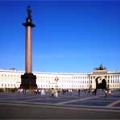
A (very brief) Guide to Saint Petersburg
Saint Petersburg was founded in 1703 by Tsar Peter the Great. During the following two centuries, when Saint Petersburg was the capital of Russia, the city quickly developed into one of the world’s most magnificent cities thanks to the construction of impressive edifices such as the Winter Palace, the Admiralty, the Mariinsky Theater and St. Isaac’s Cathedral.
Despite the many monumental buildings the city has an unmistakable charm thanks to the numerous channels and bridges which give Saint Petersburg a romantic flair.
Predominant Architecture:
The range of architectural styles is breathtaking, from the elegant charms of early baroque to the staggering ornamentation of the Russian revival. Nowhere else in the world can be found such varied architectural styles – classicism, eclecticism and Modern – in such close proximity.
Places to See:
Hermitage: One of the most famous museums in the world. Founded in 1764 by Catharine the Great, the museum is housed in the magnificent Winter palace and adjoining Hermitage buildings.
Peterhof: A magnificent country residence created in the early 18th century by tsar Peter the Great.
Church of the Savior on Spilled Blood: This remarkable church with colorful onion domes was built at the end of the 19th century in honor of the assassinated tsar Alexander II.
St. Isaac’s Cathedral: Completed in 1858 after 40 years of construction, the magnificent cathedral with its enormous gilded dome is one of the largest in Europe.
Nevsky Prospekt: A wide boulevard connecting the Admiralty Building with the Alexander Nevsky Monastery is Russia’s most famous boulevard. It is lined with magnificent palaces, churches and monuments.